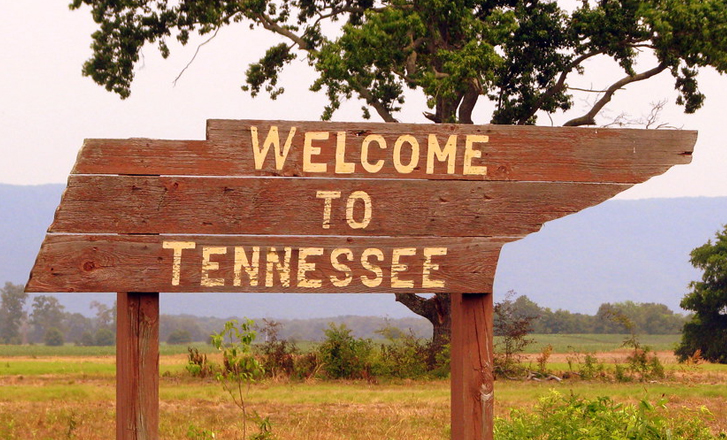A More Rapid Economic Growth That All State Residents Benefit From Would Likely Help Reduce The Share Of Residents Living Below The Poverty Line, Which, At 13.9%, Is Among The 10 Highest State Poverty Rates.
Photo Credit: Brent Moore / CC
Published May 21, 2021
By Samuel Stebbins [24/7 Wall St. via The Center Square] –
The COVID-19 pandemic sent economic shockwaves through the U.S. economy, tripling the monthly unemployment to nearly 15% and leading to a more than 30% quarterly decline in GDP — by far the largest economic contraction in U.S. history.
No corner of the country was untouched by the pandemic’s economic consequences — but some states have emerged better off than others. A range of factors, including industrial diversity, labor force education levels, household income, and long-term GDP growth, have an effect on a state’s overall economic strength — and its ability to withstand the impact of the pandemic.
To determine the states with the best and worst economies, both in the years leading up to the pandemic and during it, 24/7 Wall St. created an index of five measures â five-year economic growth, five-year employment growth, the poverty rate, unemployment rate, and share of adults with a bachelor’s degree or higher.
*** Click Here to Support Conservative Journalism in Tennessee. We can’t cover News Stories such as this without your support!***
Tennessee reported some of the strongest job growth of any state in recent years. Overall employment in the state climbed at an average annual rate of 1.2% over the last half decade, while nationwide, employment grew at just a 0.1% pace, due largely to the COVID-19 pandemic. Today, 5.0% of the state’s labor force are out of work, below the 6.0% national unemployment rate.
Economic growth in Tennessee over the last five years falls in the middle of all states and is not especially strong or weak. A more rapid economic growth that all state residents benefit from would likely help reduce the share of residents living below the poverty line, which, at 13.9%, is among the 10 highest state poverty rates.
All index components used to create this ranking were included at equal weight. All data used to create the index came from the Bureau of Labor Statistics and the U.S. Census Bureau. Additional state level data on economic output by industry from the Bureau of Economic Analysis.
This is how all 50 state economies rank.
| Rank | State | Poverty rate | March 2021 unemployment rate | Avg. annual employment chg., March 2016 to March 2021 | Avg. annual GDP chg., Q4 2015 to Q4 2020 |
|---|---|---|---|---|---|
| 1 | Utah | 8.9% | 2.9% | +2.0% | +3.9% |
| 2 | Idaho | 11.2% | 3.2% | +2.3% | +3.9% |
| 3 | Washington | 9.8% | 5.4% | +1.2% | +4.3% |
| 4 | Colorado | 9.3% | 6.4% | +1.4% | +2.8% |
| 5 | New Hampshire | 7.3% | 3.0% | +0.2% | +0.6% |
| 6 | Nebraska | 9.9% | 2.9% | +0.0% | +1.2% |
| 7 | Minnesota | 9.0% | 4.2% | -0.1% | +1.1% |
| 8 | Massachusetts | 9.4% | 6.8% | +0.2% | +1.4% |
| 9 | Georgia | 13.3% | 4.5% | +1.7% | +2.2% |
| 10 | Oregon | 11.4% | 6.0% | +0.9% | +2.8% |
| 11 | Virginia | 9.9% | 5.1% | -0.2% | +1.2% |
| 12 | Kansas | 11.4% | 3.7% | +0.2% | +1.1% |
| 13 | Montana | 12.6% | 3.8% | +0.5% | +1.2% |
| 14 | South Dakota | 11.9% | 2.9% | +0.6% | +0.8% |
| 15 | Florida | 12.7% | 4.7% | +0.9% | +2.2% |
| 16 | Maryland | 9.0% | 6.2% | -0.6% | +1.0% |
| 17 | Arizona | 13.5% | 6.7% | +1.9% | +2.9% |
| 18 | Wisconsin | 10.4% | 3.8% | -0.2% | +0.8% |
| 19 | Vermont | 10.2% | 2.9% | -1.9% | -0.1% |
| 20 | North Carolina | 13.6% | 5.2% | +0.8% | +1.7% |
| 21 | Indiana | 11.9% | 3.9% | +0.1% | +1.5% |
| 22 | South Carolina | 13.8% | 5.1% | +0.9% | +1.8% |
| 23 | Maine | 10.9% | 4.8% | -0.7% | +1.0% |
| 24 | Alabama | 15.5% | 3.8% | +1.3% | +1.1% |
| 25 | Tennessee | 13.9% | 5.0% | +1.2% | +1.0% |
| 26 | Missouri | 12.9% | 4.2% | -0.0% | +0.7% |
| 27 | New Jersey | 9.2% | 7.7% | -0.9% | +0.3% |
| 28 | Iowa | 11.2% | 3.7% | -0.9% | +0.3% |
| 29 | Ohio | 13.1% | 4.7% | +0.0% | +0.7% |
| 30 | North Dakota | 10.6% | 4.4% | -0.6% | -0.4% |
| 31 | Texas | 13.6% | 6.9% | +0.6% | +1.7% |
| 32 | California | 11.8% | 8.3% | -0.6% | +2.4% |
| 33 | Delaware | 11.3% | 6.5% | +0.4% | -0.6% |
| 34 | Nevada | 12.5% | 8.1% | +1.5% | +1.9% |
| 35 | Michigan | 13.0% | 5.1% | -0.6% | +0.4% |
| 36 | Wyoming | 10.1% | 5.3% | -0.4% | -1.6% |
| 37 | Rhode Island | 10.8% | 7.1% | -0.8% | -0.5% |
| 38 | Oklahoma | 15.2% | 4.2% | +0.4% | -0.6% |
| 39 | Pennsylvania | 12.0% | 7.3% | -0.8% | +0.6% |
| 40 | Illinois | 11.5% | 7.1% | -1.6% | +0.2% |
| 41 | New York | 13.0% | 8.5% | -0.8% | +0.8% |
| 42 | Arkansas | 16.2% | 4.4% | +0.1% | +0.6% |
| 43 | Alaska | 10.1% | 6.6% | -0.8% | -0.8% |
| 44 | Connecticut | 10.0% | 8.3% | -2.4% | +0.1% |
| 45 | Kentucky | 16.3% | 5.0% | -0.1% | +0.5% |
| 46 | Hawaii | 9.3% | 9.0% | -2.1% | -0.5% |
| 47 | West Virginia | 16.0% | 5.9% | +0.3% | -0.2% |
| 48 | New Mexico | 18.2% | 8.3% | -0.1% | +1.1% |
| 49 | Mississippi | 19.6% | 6.3% | +0.1% | +0.5% |
| 50 | Louisiana | 19.0% | 7.3% | -0.8% | +0.3% |





